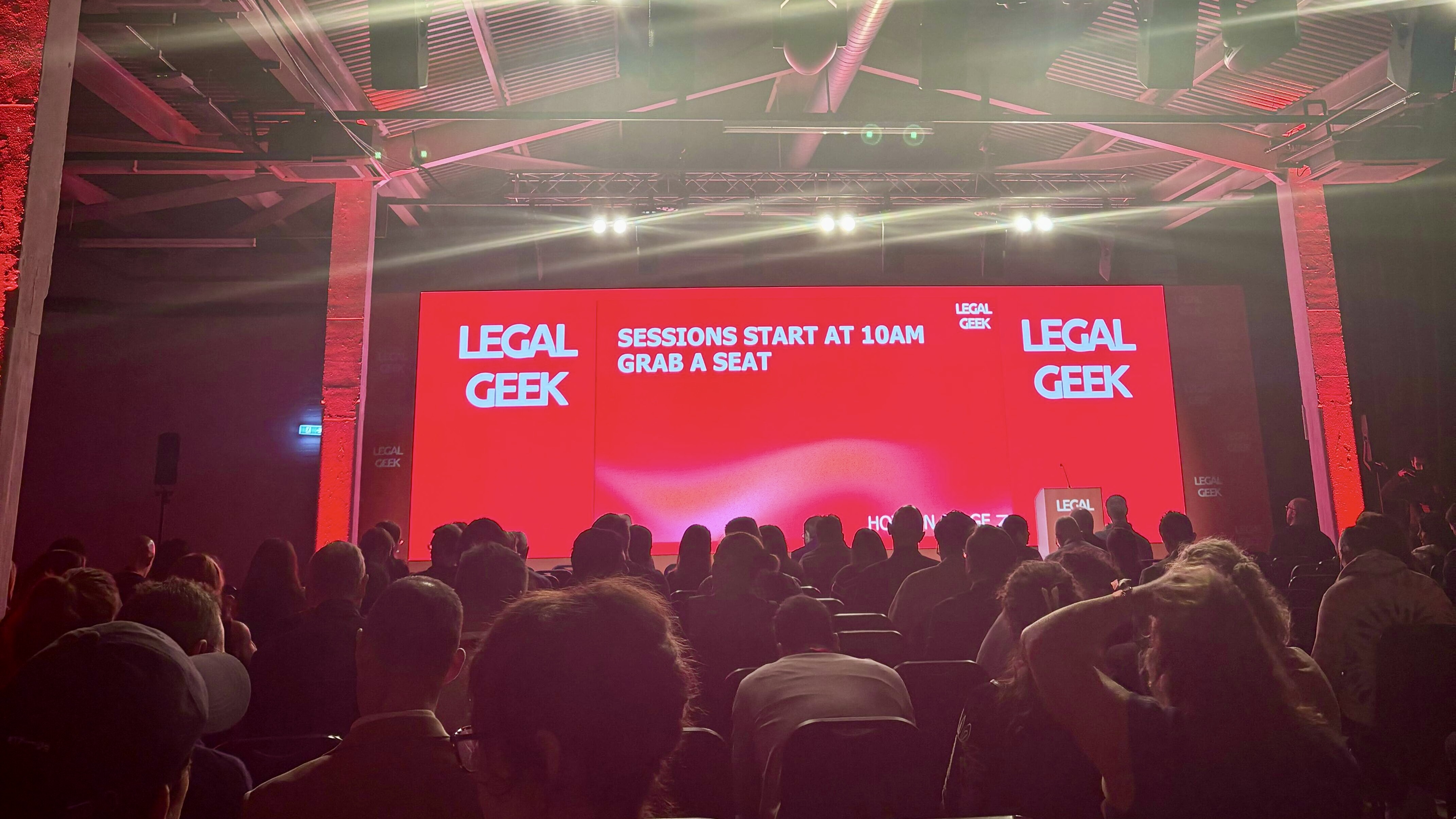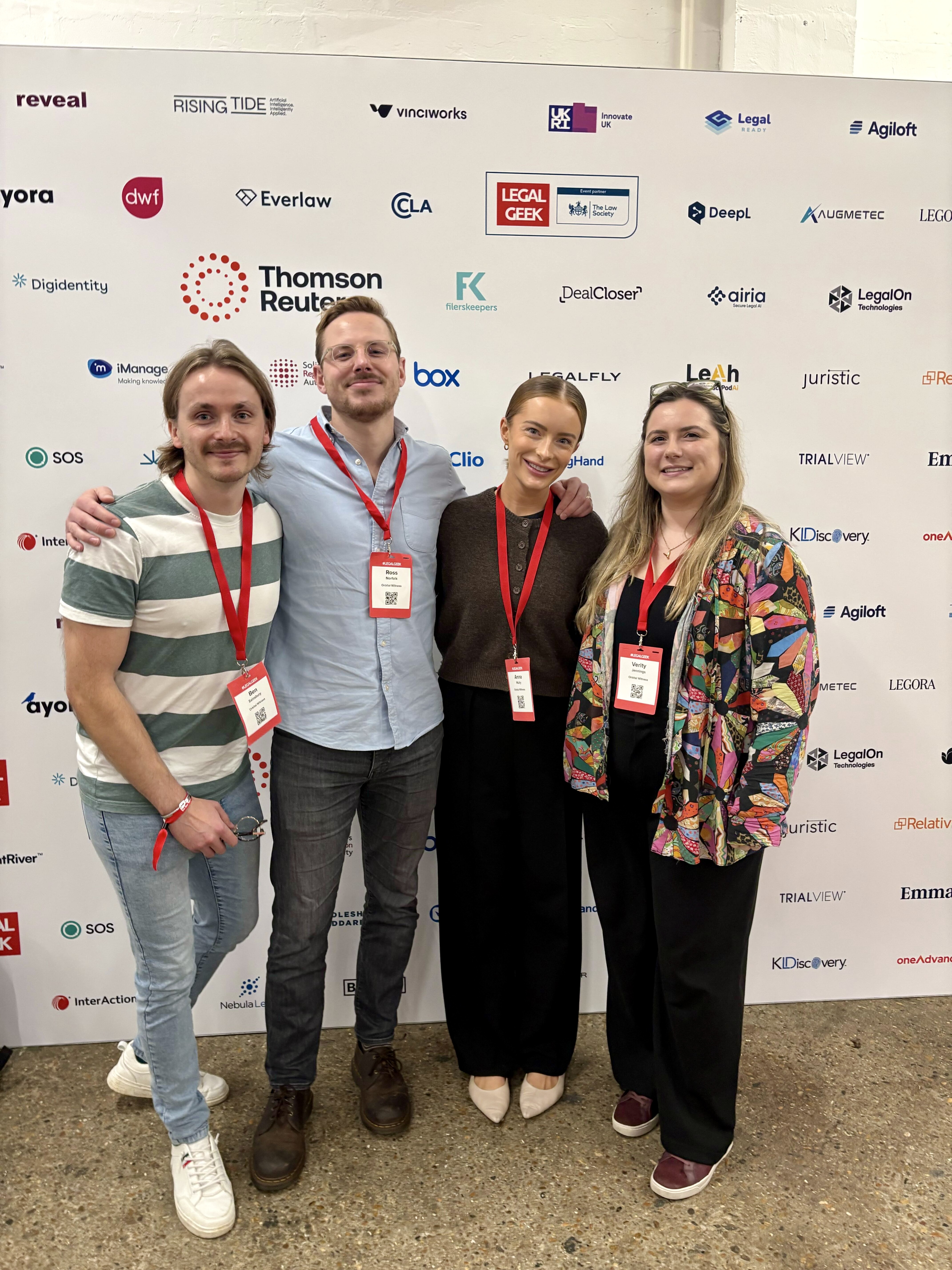Legal Geek 2025: AI Moving from Promise to Proof

Ben Sainsbury

Legal Geek 2025 was once again a fascinating reflection point for the industry. Last year’s conversation centred around the promise of AI in law. This year, the conversation shifted toward the realisation of that promise—real life examples of where this once-in-a-generation technological advancement is already changing the way legal services are delivered.
Ben Sainsbury, Orbital’s Head of Legal Engineering, attended the event and shares his key takeaways.
The Market Landscape: Similar Tools, Sharper Expectations
This year’s exhibition hall revealed an industry shifting from early adoption toward maturity. Many vendors showcased what they described as “unified workspaces”: single platforms promising to act as the central hub for drafting, reviewing, automating and integrating. On the surface, it felt like a step forward, yet beneath it a more complex picture is revealed.
Across vendors, products looked and sounded strikingly alike. Summarisation, workflow automation, drafting and integrations featured widely, delivered through similar interfaces. It signalled clear technological convergence but also highlighted how difficult genuine differentiation in legal tech has become.
Against this competitive backdrop, it is not surprising that purchasers of legal tech are increasingly required to invest a lot of time, resources and money in trialling products in order to really understand where the differentiators lie, and of those uncovered, which best suit their individual law firm or practice area. For buyers, decisions on which vendors to partner with are becoming increasingly difficult.
Alongside this, lawyers’ expectations of what legal tech should be capable of have increased as new base models, promising greater intelligence, have been released over the course of the last year. That in itself is a good indication that the promise of AI is starting to become a reality; these tools are now doing things that weren’t possible a year ago.
As competition intensifies, many vendors are turning to brand marketing to cut through the noise, from wrapped London taxis to elaborate booth designs. But while stronger branding might help vendors get noticed, buyers remain focused on one thing: real, measurable results. In an increasingly crowded market, trust will be built not through promises but through proof, showing the ability to demonstrate tangible outcomes for lawyers and their clients.

ROI and Commercial Realities: Death of the Billable Hour?
As adoption in the legal industry deepens, the conversation around AI is becoming increasingly commercial. Firms are moving beyond pilots to ask a more fundamental question: what is the measurable value of technology and how can I capture that?
Clients of law firms are increasingly expecting their lawyers to use AI as part of their day-to-day workflows, and for that usage to have a positive (reductive) effect on the fees they are charged. However, the rising tide of proof that this technology is transformative has a major flood gate to overcome: the billable hour.
There is no getting away from the fundamental conflict between technology that creates efficiencies, and a value capture system for legal services that is built around how much time a task or transaction takes to complete; this will be one of the legal industry’s biggest adoption challenges.
As was eloquently illustrated in a skit that framed the conversation between lawyer and client through the lens of marriage counselling, Shara Gibbons of HSBC quipped that “it always starts with your hourly rate” and that “every relationship is built on trust—that is broken when fees are increased without adequate warning”. Clients want upfront clarity on fees, and no nasty surprises. In response, Chris Grant, MD of Client Value at Goodwin, made an analogy with taxis and the introduction of Uber—previously, as a taxi customer, you would sit and watch the meter rising, with no certainty what the final bill would be; with Uber, you now see, upfront, what the taxi ride will cost, when the taxi will pick you up, and when you will likely arrive at your destination—the client view is that that is what we need in legal services.
On the other hand, legal technology is a cost for legal service providers. Law firms must therefore be able to capture the value that delivers directly to clients in a way that compliments their own human expertise.
The “Rise of the Bionic Lawyer”, as Gordon Crenshaw of The Legal Tech Fund coined in his talk, is going to require a re-think of the billable hour, and fast. If anything is going to inhibit everyone benefitting from more efficient legal services, it is the prevailing business model of law firms.
At Orbital’s After Hours drinks this year, it was the topic of the billable hour that I discussed with one of our customers. It seems only a matter of time that lawyers are required to adopt a new way of capturing the real value they deliver to clients: with value-based pricing, fixed fees, speed of delivery bonuses. We made analogies to other professions in the property industry that appear to have far more beneficial ways of capturing value, such as property agents who charge % fixed fees of transaction values. With the right thinking, these are problems that should be surmountable.
With all this in mind: is now the time that these changes must be made in order to capitalise on the benefits of AI in legal services?
.jpeg)
The Long View: Trust, Investment, and the Next Generation
A quote from Bill Gates (from Gordon Crenshaw’s talk at the conference) also struck a chord: “We always overestimate the change that will occur in the next two years and underestimate the change that will occur in the next ten. Don't let yourself be lulled into inaction.”
The legal sector is still navigating that early transformation curve: enthusiasm and investment are strong, yet only a small fraction of AI pilots are leading to sales. He stated that roughly 95% fail to progress to purchase, and most firms still describe their AI use as “in development.”
Yet beneath the surface, long-term foundations are forming. The next decade will bring deeper cultural, regulatory and educational transformation, shaped by several converging forces:
• Cultural change: younger lawyers are entering practice with expectations of digital fluency, flexibility and purpose-driven work (themes we unpacked at at our recent Orbital Executive Forum).
• Investment focus: investors are prioritising sustainable adoption and proven value over experimentation.
• Institutional trust: firms and regulators are redefining what “trust” means in a digital legal ecosystem (and rightly prioritising transparency, accountability and explainability).
From Human Oversight to Domain Intelligence
Many of this year’s conversations circled back to themes from last year: domain specificity and human oversight remain at the centre of meaningful AI adoption, though the discussion has become more grounded and practical.
The prevailing message remains that AI is transformative, not apocalyptic. It is a tool, both powerful and adaptable, but one that still depends on human judgement, ethics and contextual understanding.
The most successful implementations are those that blend technology with deep professional oversight; and speakers this year returned to three enduring principles for responsible use:
- Understand the technology: lawyers don’t need to code, but they must understand how AI works to supervise its output intelligently.
- Protect confidentiality: client and firm data must remain within secure, private environments.
- Verify outputs: as one panellist put it, “AI can draft, but lawyers must decide.”
Beyond oversight, attention is undeniably shifting to domain intelligence: systems that understand not just language, but legal reasoning, context and nuance. True progress will come from tools that mirror the way lawyers think, not just the way they write, embedding accountability and expertise into every stage of the process.
Final Thoughts
Legal Geek 2025 painted a picture of a market in transition. The tools are more mature, the language more grounded, and the expectations higher. But true differentiation will come only when vendors stop chasing breadth and start doubling down on depth–on real domain expertise and tangible outcomes.
Until then, the firms that win will be those that look beyond shiny user interfaces and branding and ask the hard question: does this actually make our lawyers and the client experience better?
.jpeg)
With thanks to Ross Norfolk (Legal Engineer) and Anna Mulry (AI Product Manager) for their insights.

Ben Sainsbury
Book a demo for your firm
.svg)
.png)
.jpg)
%20-%20PW.jpg)